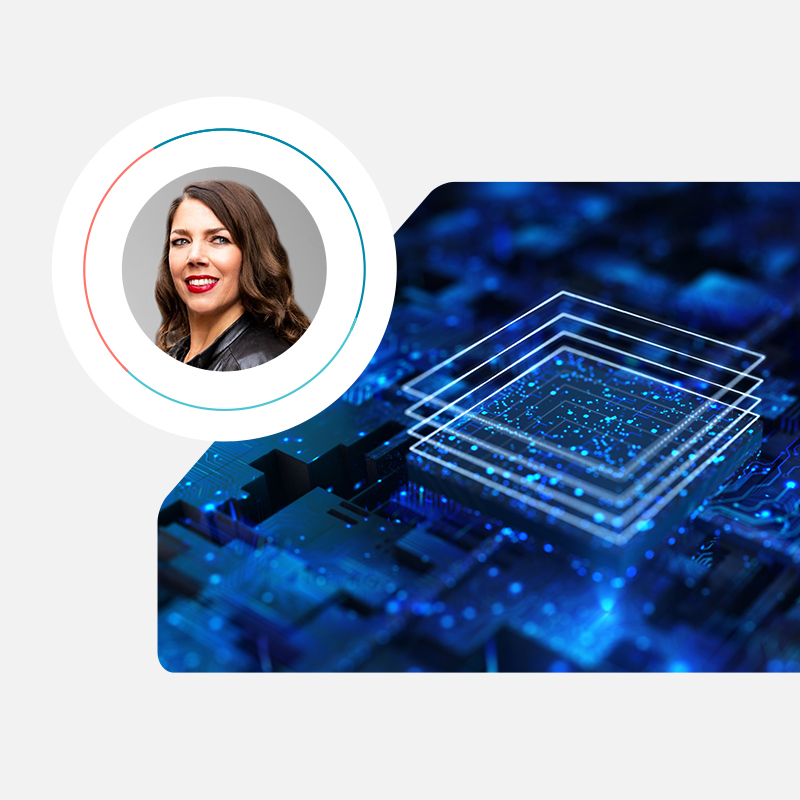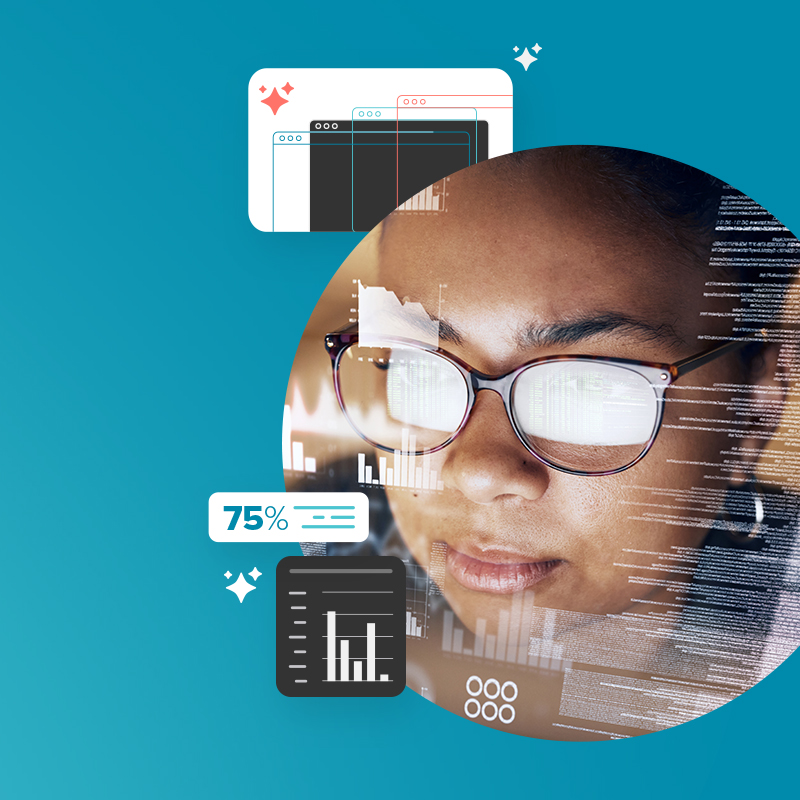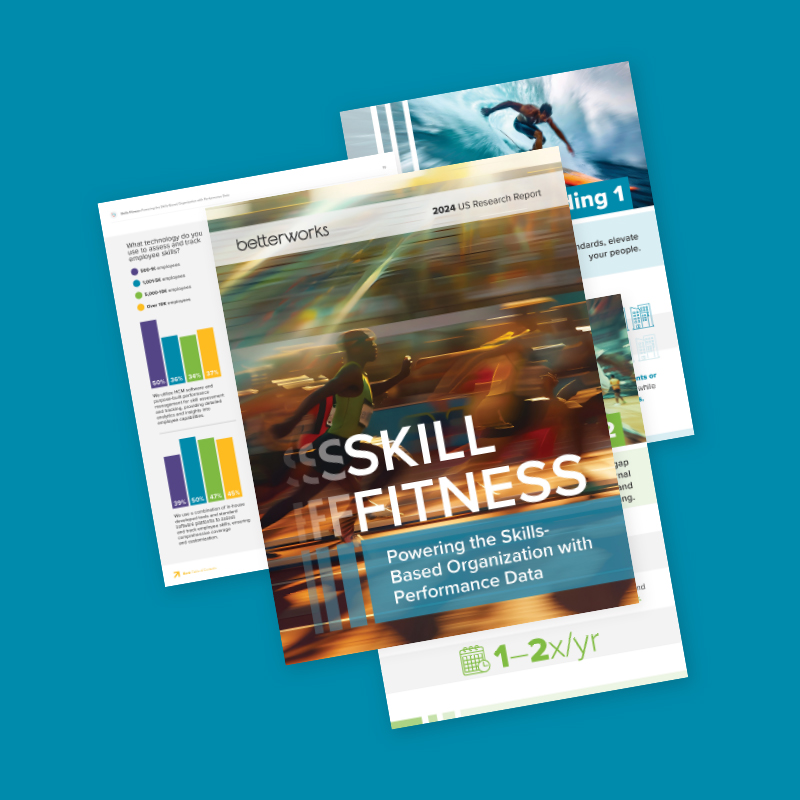Analytics has dominated the conversation about artificial intelligence (AI) at work, and for good reason: Analytics revolutionizes talent management because of how it dissects past performance and forecasts future trends. However, AI-driven analytics is limited in its ability to support a human experience at work.
People analytics excels at answering questions about historical data and predicting outcomes. Yet, for all its benefits, AI-driven analytics can’t quite deliver a people-first, one-on-one experience to nudge users to improve their performance — all in the flow of work. Generative AI (GenAI), on the other hand, takes a more human-centered approach to guiding managers and employees to better outcomes.
GenAI is a smart choice for HR leaders seeking solutions to improve performance management. Here’s why.
GenAI feels more human
GenAI blurs the line between machine and human more than previous AI technologies. With other AI applications, it doesn’t take long to scratch the surface and see the machine behind the output. But, because of how GenAI leverages large language models (LLMs) and communicates back to us using semantic search, it offers a far more relatable user experience.
One of the top reasons we’re seeing high adoption of GenAI is because it’s so natural, intuitive, and believable — but this can have negative consequences if people are overly trusting of its results. Like people, GenAI takes what it knows and generates a response in the moment. That’s what makes the technology such a leap forward, but that creativity also introduces an element of risk.
Depending on what you ask it about and the training data it uses to generate a response, GenAI may provide an answer that isn’t completely true. If a manager asks too specific a question about employee goals over the last six months, the tool may respond by using the data to “hallucinate” an answer to the question.
Every enterprise needs to make sure everyone understands the risk of creative thought when using GenAI to evaluate performance. There must always be a human “in the loop” to watch out for errors in the output. Instead of treating GenAI like it’s a traditional analytics tool, train managers to ask questions suited to its strengths, such as summarizing feedback or writing conversation prompts.
GenAI accepts a greater variety of inputs
To make the most of analytics tools, the data you input must be structured for specific categories and questions. That makes it a great option for getting answers to very specific questions based on clearly defined data — but the best performance data is rarely structured for machines to understand.
One of GenAI’s more human-like features is its skill in interpreting unstructured data, such as performance feedback embedded in a conversation. GenAI can extract insights from this diverse data — including data, like feedback from an employee’s peers that the manager may not even be aware of — and respond with salient information in a conversational manner. This retrieval capacity can give the manager back quite a bit of time while also ensuring the manager doesn’t miss important information.
Within enterprise communication platforms such as Slack or Microsoft Teams, for example, GenAI can collect feedback, recognition, and other communication, pulling all of it into the system of record. This solves a longstanding problem with performance management technology: the data these tools need is stored in other places separate from where the work is actually happening, and it takes a lot of valuable time to transfer that data in a structured format.
GenAI can help managers recognize and reinforce meaningful moments in the flow of work and from a variety of places, providing a richer glimpse into employee performance. For example, structured data analysis provides numerical metrics like sales quotas met, on-time attendance, and adherence to deadlines. GenAI can process employee feedback comments and collaboration tool interactions to assess how other people perceive that team member’s performance. It can surface nuanced data buried in an enterprise that would be otherwise very hard to find.
“GenAI can extract insights from this diverse data — including data, like feedback from an employee’s peers that the manager may not even be aware of — and respond with salient information in a conversational manner. This retrieval capacity can give the manager back quite a bit of time while also ensuring the manager doesn’t miss important information.”
GenAI answers semantic questions
With analytics, you’re searching for a specific answer to a predefined query, such as what percentage of the workforce did something or how a worker is progressing against their goals. With GenAI, you‘re able to ask more sophisticated questions of the data, generating responses that support strategic, creative thought.
Being able to ask semantic questions of the data through GenAI can produce insights that analytics can’t. Instead of asking a predefined question about the number of deals a sales rep closed, for example, their manager can ask a more nuanced question about the factors leading to their success. An employee could ask what their peers’ goals are and how they can help contribute to the achievement of those. This type of information can help managers and employees have better, more actionable performance conversations and enable employees to improve collaboration and performance.
What is responsible AI?
With the mad rush to take advantage of GenAI’s capabilities, it’s important to balance the capabilities and capacity of AI by building in safeguards. Responsible AI delivers a good user experience by operating with constrained use cases, safeguarding data, and maintaining human decision-making and control of the GenAI. A responsible AI approach is grounded in transparency, human-centricity, privacy, and stringent governance.
What does this look like in practice? It includes ensuring user trust and understanding by marking all AI-generated outputs clearly and providing explanations for the AI’s recommendations. It also emphasizes a human-first design philosophy to preserve the critical role of human insight in decision-making while also helping reduce bias and increase accuracy. A strong technical infrastructure protects data in transit and at rest, avoids unnecessary retention of data, and incorporates clear communication about data practices.
GenAI’s human-like qualities uniquely qualify it to support performance management. Giving managers and employees an AI assistant that interacts in a human way can help them drive better performance and ideally, allow us all to focus on strengthening our connections to one another, so vital in work and life.
“Responsible AI delivers a good user experience by operating with constrained use cases, safeguarding data, and maintaining human decision-making and control of the GenAI. A responsible AI approach is grounded in transparency, human-centricity, privacy, and stringent governance.”
The power of AI and analytics together
More and more companies are seeing the value of combining the power of generative AI with the accuracy of analytics. As the ecosystem around this technology continues to evolve, we see many startups and open-source communities attempting to tackle this challenge.
There are a number of technological advances already popping up, and there will likely be even more in the months to come. For example, a framework known as retrieval-augmented generation (RAG) helps ground the large language model at the crux of GenAI in facts — traditionally the role of analytics — while also facilitating the generative aspects of the technology. In other words, RAG enables the best of both worlds.
Additionally, there are approaches to breaking down a complex request into parts, sending requests for facts as an analytics search and requests for ideas as a semantic search. For example, a leader might ask, “What percentage of my team is at risk of missing sales goals and what might I do to help them meet their goals?” The first part of the question might be routed as an analytics request and the second part as a generative AI request. This is where analytics, such as the deep capabilities of Betterworks Advanced Analytics, combined with the natural language processing of GenAI, will help HR leaders and others in the organization quickly and easily uncover granular workforce data to make informed decisions.
Gen AI will open up a new array of capabilities to enable HR to solve mission-critical workforce challenges and unleash workforce potential with agility previously out of reach. This is an exciting new frontier for organizations to embrace, one that promises to improve the work experience for HR, managers, and employees alike.
Interested in learning more? Learn how HR data is business data.
Cheryl Porro is a visionary leader and change agent with a track record of driving growth in disruptive software companies. As the Senior Vice President of Engineering at Betterworks, she brings her wealth of experience and strategic leadership to the organization. Prior to joining Betterworks, Cheryl was instrumental in generating tremendous growth during her tenure at Salesforce while growing the company’s nonprofit and education business to hundreds of millions in just 4.5 years. She also scaled Salesforce’s platform quality engineering division, overseeing the growth of a team that exceeded 100 members.
How does HR data drive the business?








